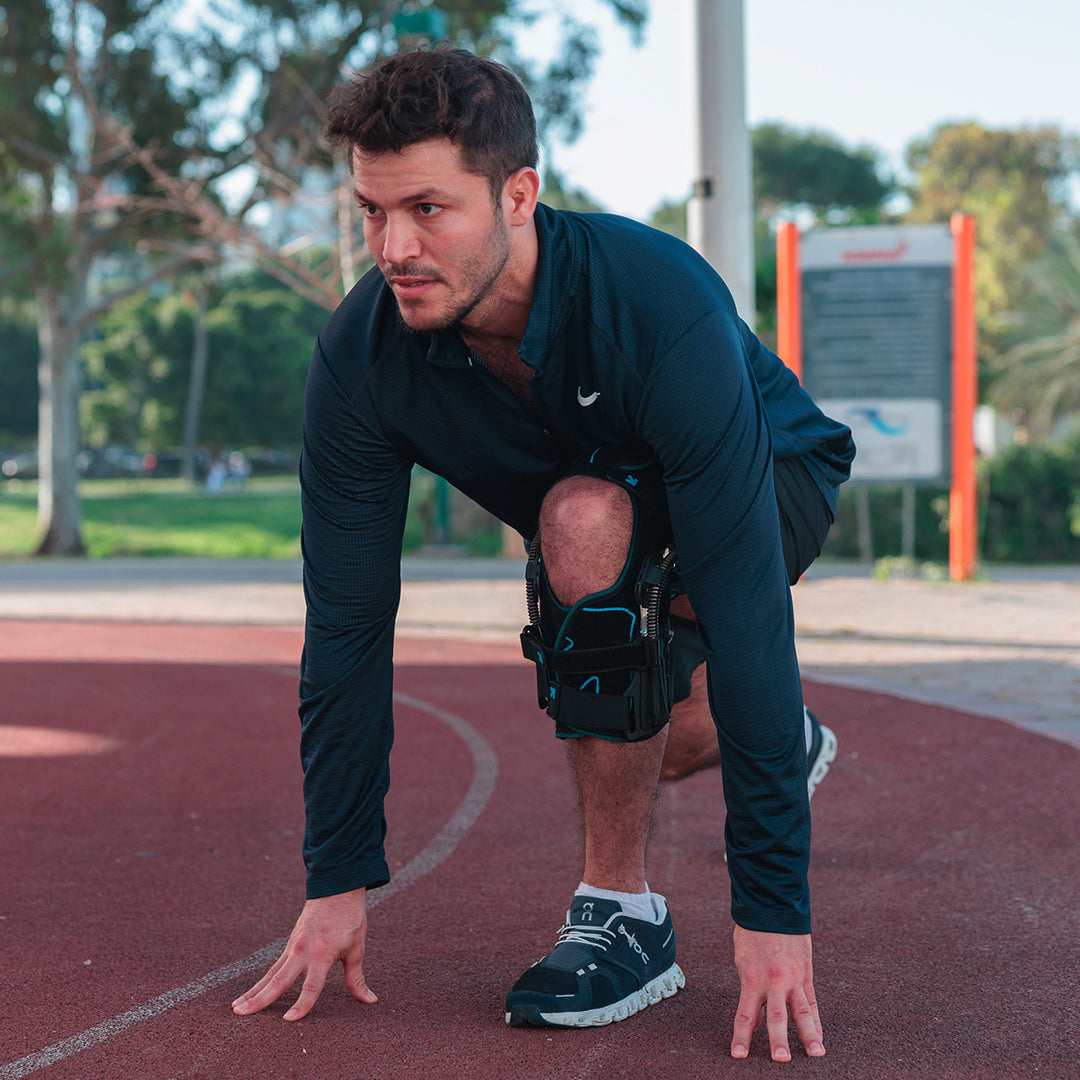If you’ve ever dealt with knee pain, you’ve probably reached for some form of support whether it's a brace, strap, or the ever-popular knee support sleeve. They’re lightweight, easy to use, and offer just enough compression to make you feel like you’re doing something good for your joints.
But here’s the truth: while knee support sleeves can be incredibly helpful, they’re not always the right move. In fact, wearing one at the wrong time or wearing it all the time can actually backfire.
So let’s talk about it: When should you not wear a knee support sleeve? Whether you’re a gym junkie, casual runner, or just trying to stay mobile, this article breaks down the red flags, myths, and must-knows.
First What Is a Knee Support Sleeve?
A knee support sleeve is a stretchy, usually neoprene or elastic fabric sleeve you slide over your knee. It applies gentle compression to improve circulation, reduce swelling, and provide light support.
It’s not rigid, doesn’t have hinges or straps, and doesn’t really restrict your movement. That’s why it’s perfect for things like:
- Post-workout recovery
- Mild arthritis
- Light knee instability
- Swelling control after standing all day
But again it’s not a brace. It won’t protect a torn ligament or hold your knee together after surgery. And that’s where people get into trouble.
When You Should Not Wear a Knee Support Sleeve
Let’s dive into the most common situations where a knee support sleeve might actually do more harm than good:
1. You’re Recovering from a Serious Injury
Torn ACL? Meniscus tear? Post-surgery?
A knee support sleeve is NOT enough. You need structural support something with hinges, straps, and stabilization features. Wearing just a sleeve gives you a false sense of security and can delay healing or cause reinjury.
Use instead: A hinged knee brace or medical-grade recovery brace prescribed by your doctor or physical therapist.
2. You Rely on It All Day, Every Day
A lot of people slap on a sleeve every morning like it’s part of their wardrobe. But wearing a knee support sleeve 24/7 especially if you’re not in pain isn’t smart.
Over relying on external support can cause the muscles around your knee to weaken over time. That means less natural stability and more risk in the long run.
The fix: Use the sleeve only when you need it like during workouts, long walks, or flare-ups. Then take it off and let your body work naturally.
3. You’re Not Addressing the Root Problem
If your knee hurts, a sleeve can reduce discomfort but it’s not fixing the cause.
Whether it's tight hips, weak glutes, poor form, or old shoes, you’ve got to treat the issue, not just slap on a compression sleeve and hope for the best.
Pro tip: Combine your knee support sleeve with rehab exercises, foam rolling, and proper footwear to actually solve the problem.
4. You’re Dealing with Sharp, Intense Pain
Knee sleeves are made for low-grade pain, soreness, or swelling. If you’ve got sudden, stabbing pain especially with swelling or instability you might have something more serious going on.
Wearing a sleeve in this case could mask pain and delay treatment, making the situation worse.
What to do instead: See a doctor or physical therapist. You may need imaging or a more advanced support device.
5. During Sleep
Unless specifically instructed by a medical professional, wearing a knee support sleeve overnight isn’t usually necessary and can sometimes restrict blood flow if it’s too tight.
Your body does a lot of natural healing at night. Give your knee a break too.
Better idea: Elevate your leg and use ice or heat depending on the issue.
6. When It Doesn’t Fit Properly
Too tight = cutting off circulation. Too loose = no real support.
A poorly fitting sleeve can cause chafing, swelling, numbness, or even make your symptoms worse.
Fix it: Measure your knee and follow the size chart. Don’t guess. And make sure the sleeve stays in place without rolling or bunching.
7. You’re Using It for the Wrong Activity
Knee support sleeves are awesome for running, cycling, lifting weights, or general movement. But they’re not made for:
- Contact sports (like football or basketball)
- Skiing or snowboarding
- Post-op rehab
- Heavy manual labor with deep squatting
These situations call for stronger support think braces with side stabilizers or dual spring mechanisms.
Upgrade to: A hybrid product like the Nübrace, which combines compression with actual structural reinforcement.
What to Do Instead of Overusing a Sleeve
If you find yourself constantly reaching for your knee support sleeve, that’s a sign. You need to dig deeper into what your body’s telling you. Try:
- Strength training - Focus on quads, hamstrings, glutes, and calves
- Mobility work - Hip and ankle stiffness can overload the knee
- Foam rolling & stretching - Especially your IT band and calves
- Better shoes - Worn-out sneakers are knee killers
- Physical therapy - Even just a few sessions can give you a roadmap to relief
When a Knee Support Sleeve Does Make Sense
To be clear we’re not here to bash knee sleeves. They can be a super effective tool when used right. Here’s when they do help:
- After long periods of standing or walking
- During workouts where your knee feels “shaky”
- During arthritis flare-ups
- After a long hike, jog, or sports session
- For general swelling and soreness
Just don’t make them your crutch. Make them your support.
Looking for More Than Just a Sleeve?
If you’re finding that a basic sleeve isn’t cutting it but you’re not ready for a bulky post-op brace either consider upgrading to a dynamic solution like the Nübrace.
This advanced knee support sleeve hybrid offers:
- Dual-spring assistance for movement
- Compression to manage swelling
- Adjustable resistance for personalized support
- Comfortable, breathable fabric for all-day wear
Basically, it’s everything you wish your old knee sleeve could do but smarter.
Final Thoughts
So, when should you not wear a knee support sleeve?
When you’re using it instead of real treatment. When it doesn’t fit. When you’re recovering from a legit injury. Or when you just don’t need it.
Knee support sleeves are an amazing tool when used correctly but they’re not the answer to everything. Use them strategically, pair them with smart movement, and don’t be afraid to level up to something more supportive if needed.









